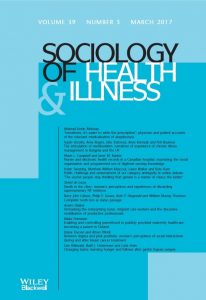Good for Business, Bad for Asian Americans? Affirmative Action and the Lawsuit against Harvard University
by Jenny Enos, Rutgers University · Published · Updated
 Human heterogeneity in culture, race, gender, sexuality, and any other characteristics – commonly referred to as “diversity” – is often lauded in organizations across the U.S. for its various positive outcomes. While hiring or recruiting a diverse pool of people is arguably an ethical imperative, much of the narrative around diversity instead revolves around how it’s “good for business”. For example, a recent Forbes article argues that “diversity and inclusion are essential to business success”, and Amazon’s website claims that inclusion is “integral to people doing their best work.” Although such statements may come across as slightly abrasive, they’re not wrong; research has shown that people working in diverse teams display higher levels of creativity and innovation, make higher quality decisions, and experience deeper information processing and complex thinking.
Human heterogeneity in culture, race, gender, sexuality, and any other characteristics – commonly referred to as “diversity” – is often lauded in organizations across the U.S. for its various positive outcomes. While hiring or recruiting a diverse pool of people is arguably an ethical imperative, much of the narrative around diversity instead revolves around how it’s “good for business”. For example, a recent Forbes article argues that “diversity and inclusion are essential to business success”, and Amazon’s website claims that inclusion is “integral to people doing their best work.” Although such statements may come across as slightly abrasive, they’re not wrong; research has shown that people working in diverse teams display higher levels of creativity and innovation, make higher quality decisions, and experience deeper information processing and complex thinking.
While it may be true that diversity and inclusion are “good for business”, this singular focus on economic success as the desired outcome ignores the equally – if not more – important social justification and outcomes. By making a conscious effort to hire or enroll more individuals from historically underrepresented groups (e.g. women, people of color, LGBTQIA+ individuals), organizations can level the playing field and work to undo centuries of active discrimination against such groups. It is about opening the door that has historically been closed to anyone besides white, Anglo-Saxon, cis-gender, heterosexual, able-bodied men.
This is precisely the goal of so-called “affirmative action” policies, which have existed since the 1960s but have attracted much controversy in recent years. According to Merriam Webster, affirmative action refers to the “active effort to improve the employment or educational opportunities of members of minority groups and women.” Particularly in higher education admissions, critics of affirmative action often assume that these efforts involve some form of preferential treatment whereby racial minority applicants are prioritized for admission over white applicants – even when they are “less qualified” than their white peers. In practice, the Supreme Court has ruled that racial quotas and separate admissions standards for racial groups are unconstitutional. However, universities can legally take applicants’ race into account as part of a holistic review of their application in efforts to increase racial diversity on campuses. Some argue that these policies basically amount to “reverse discrimination” against white applicants, who now naturally face more competition in college admissions than they did back when campuses were exclusively white (as they should). However, there is little evidence that race-conscious admissions function at the expense of “better qualified” white applicants, and young adults who are white are still significantly more likely to attend college than their Black and Hispanic counterparts.
Recently, a lawsuit filed against Harvard University claiming racial discrimination in their admissions process has taken the debate over affirmative action beyond the white/black color line. The plaintiffs, Students for Fair Admissions, allege that Harvard purposefully limits the number of Asian students – who tend to outperform other racial groups on the SATs and their transcripts – that are admitted to the university by routinely scoring them lower on subjective, personal metrics. As such, the lawsuit argues that Asian students are discriminated against on the basis of their race and urges Harvard to adopt a race-neutral admissions policy; in other words, an admissions policy solely be based on “merit”. If this were the case at Harvard, the plaintiffs argue, Asian students would see a much higher admissions rate.
In a recently published article in Sociological Forum titled “Reckoning with Asian America and the New Culture War on Affirmative Action,” Jennifer Lee deconstructs the notion that Asian Americans are victims of affirmative action policies at universities, like the lawsuit against Harvard suggests. Importantly, Lee notes that less than 10 percent of Asian Americans “report that they or someone they know had been passed over for college admissions because of affirmative action” according to a recent survey, and that a majority of Asian Americans support affirmative action policies. In other words, there is much more nuance in attitudes toward affirmative action among Asian Americans than this lawsuit suggests, and those attitudes are certainly not trending in the plaintiff’s favor. In light of the increase in anti-Asian hate crimes during the COVID-19 pandemic, Lee also points out that while Asian Americans are portrayed as a hyper-competent “model minority” in the U.S., they are still subject to horrific racial bias and violence. As such, the idea that Asian Americans would benefit from race neutrality conveniently ignores this reality; that in spite of academic competence, Asian Americans are not immune from racism in the U.S. Ultimately, then, race neutrality is still an impossibility for Asian America – no matter how much opponents of affirmative action deny it.





1540-6210/asset/society_affiliation_image.gif?v=1&s=812a48e1b22880cc84f94f210b57b44da3ec16f9)